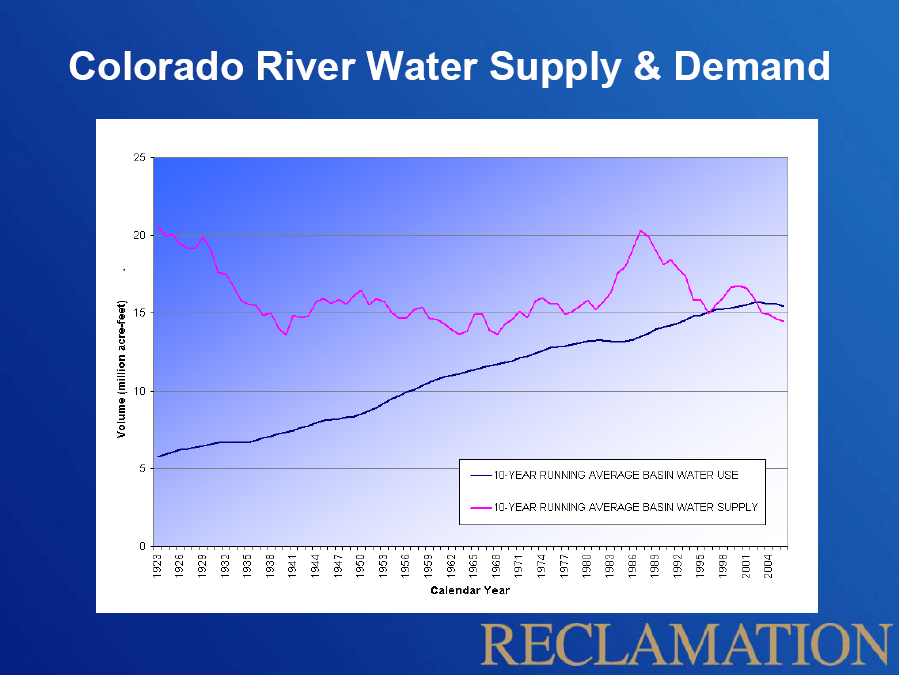The suddenly ubiquitous Bureau of Reclamation Colorado River supply-demand graph showed up today in a helpful Bruce Finley story in today’s Denver Post about the conversation in Colorado regarding the disconnect between shrinking Colorado River supply and growing Colorado River demand:

Colorado River Supply and Demand, USBR
Colorado River water consumed yearly for agriculture and by the 30 million Westerners who rely on it now exceeds the total annual flow.
A growing awareness of that limited flow is leading to increased scrutiny of urban development — especially projects that require diverting more water to the east side of the Continental Divide.
“We’re no longer in a surplus situation,” said Bill McDonald, the U.S. Bureau of Reclamation’s deputy commissioner for policy and budget. “The teeter-totter has tipped.”
So we’ve clearly identified the problem. What is the solution? By solution here, I’m not asking for a specification of who gets less water in the future. I’m interested in what the institutional mechanisms might be by which we would solve the problem. Do we just go into court all sharp-elbowed and hope the Law of the River breaks in “our” favor (whoever “we” might be)? Or are their existing problem-solving mechanisms that can allow us to sort this out in a more collaborative way?
updated: Added link to Finley’s story. Oops.

The start of the solution is to recognize the framework:
I = P x A x T
and start crafting policies and educating humans about societal restructuring aimed at reducing human population growth and human consumption.
Oh, I know, I know. Which may be why this man is pessimistic about human futures.
Best,
D